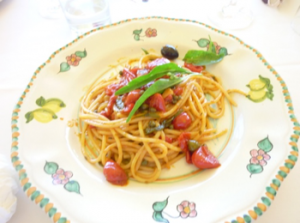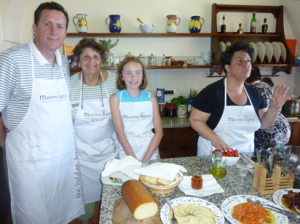Tortellini en Brodo
In the space of a breath
I think about what you could be
I envision a cottage
Underneath the Tuscan sky
Where you were loved
Kneaded with care
As the nonnas brought you to me
How beautifully you had come together
I think about the vibrant orange that kissed you
The same eggs that were gathered this morning
Hold everything together
Enrich the dough
I think about the harvested grains you took in
How many things have come
From that tireless mill
Sitting in the corner
Of families large and small
Who spend every Sunday
Filling the cases with ricotta and braised cuts
While I cook alone
So much dedication
Perfection
Intensity
Flavor
Strength
Life
Death
In this opportunity
But instead
I purchase Buitoni for a dollar seventy-five
I chose to imitate the poem Zucchini by Jennifer Barone from her book, Saporoso. I chose this piece as it traces the history of a simple ingredient, zucchini, sitting on her plate and delves into what makes the process of agricultural truly remarkable. Her poem describes how factors like farming conditions, sunlight, and soil all impact our food systems that we take for granted each day. This makes the piece all the more enlightening when the narrator decides to pan out and appreciate the small details that culminate in the perfect piece of produce.
Through her poem, I learned that Jennifer has a special connection with food derived from her Italian heritage. She lives in a modern and well-off society where it is easy to not take special notice to food, and the beauty of it. It is clear from the first stanza of her poem which reads, “In the space of a breath I think about where you came from,” that Jennifer, like most people, lives a fast-paced life. Her life is not entirely driven by food, yet she still takes small moments like this one to appreciate the beauty of freshly grown produce and the ability it has to transform a dish into something culturally significant.
Taken as a whole, Zucchini is a piece that highlights many aspects of the Slow Food Movement that was mentioned in class. By paying particular attention to the quality of ingredients and by cooking meals from scratch, not only will the end product taste better, but each dish will have a story from the ingredients, making the dish all the more meaningful. I chose to draw on this theme when writing my poem. Through my cultural upbringing, I had little exposure to authenticity and innovation in cooking. Most of the meals that I ate as a child were the basic standards like frozen meals, fast food, and simple dishes that many American children tend to prefer. It wasn’t until relatively recently that I started experimenting with different cuisines and cooking more meals from raw ingredients. However, there is still a side of me that sees ready-made foods and discounts that drive my purchasing decisions.
Therefore, rather than focusing on the Slow Food Movement as is embedded in the cultural DNA of Jennifer in Zucchini, I chose to base my poem on the missed opportunities that I’m so used to seeing in food. The difference between freshly made tortellini and store-bought is so apparent, and I used this example as one of many that I am familiar with. On a recent trip to Florence, I tasted authentic tortellini en brodo and was left in awe. The flavor was outstanding, and it was so easy to see why this dish has such an important culinary heritage. Unfortunately, homemade delicious pasta dishes like this were never part of my cultural DNA, so I aimed to make that clear by ending the poem with, “I purchase Buitoni for a dollar seventy-five.”


 (The blue Amalfi coast with Mamma Agata’s garden below)
(The blue Amalfi coast with Mamma Agata’s garden below)